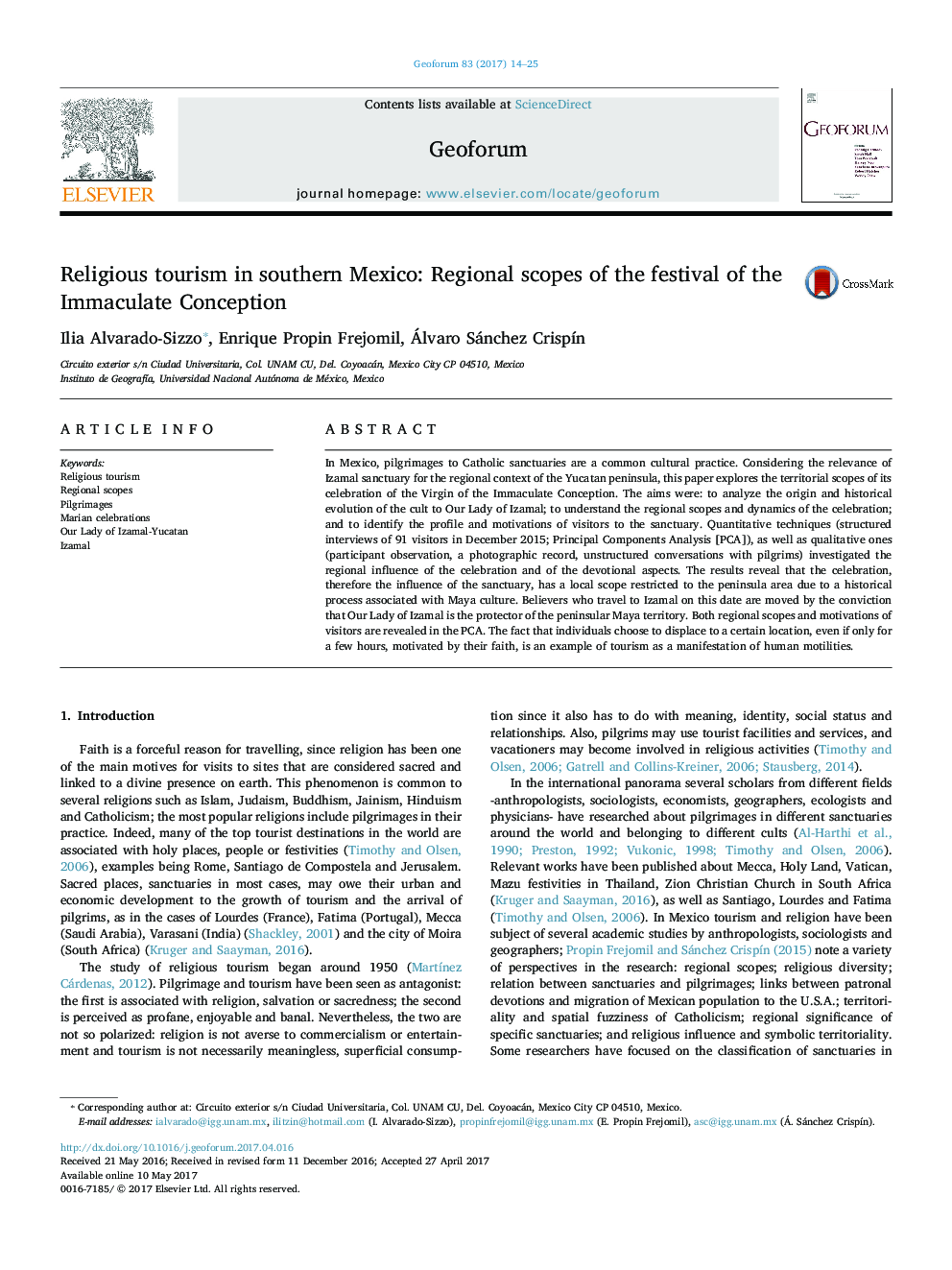| Article ID | Journal | Published Year | Pages | File Type |
|---|---|---|---|---|
| 5073144 | Geoforum | 2017 | 12 Pages |
â¢Current devotion to Our Lady of Izamal's sanctuary is continuity of Maya tradition.â¢The regional scopes of the sanctuary reveal a peninsular limited influence.â¢Most of visitors are moved by religious motivations.â¢Visiting the sanctuary is a phenomenon defined by tempo spatial circumstances.â¢Pilgrimage and visits to sanctuaries are a way to reinforce local identity.
In Mexico, pilgrimages to Catholic sanctuaries are a common cultural practice. Considering the relevance of Izamal sanctuary for the regional context of the Yucatan peninsula, this paper explores the territorial scopes of its celebration of the Virgin of the Immaculate Conception. The aims were: to analyze the origin and historical evolution of the cult to Our Lady of Izamal; to understand the regional scopes and dynamics of the celebration; and to identify the profile and motivations of visitors to the sanctuary. Quantitative techniques (structured interviews of 91 visitors in December 2015; Principal Components Analysis [PCA]), as well as qualitative ones (participant observation, a photographic record, unstructured conversations with pilgrims) investigated the regional influence of the celebration and of the devotional aspects. The results reveal that the celebration, therefore the influence of the sanctuary, has a local scope restricted to the peninsula area due to a historical process associated with Maya culture. Believers who travel to Izamal on this date are moved by the conviction that Our Lady of Izamal is the protector of the peninsular Maya territory. Both regional scopes and motivations of visitors are revealed in the PCA. The fact that individuals choose to displace to a certain location, even if only for a few hours, motivated by their faith, is an example of tourism as a manifestation of human motilities.
